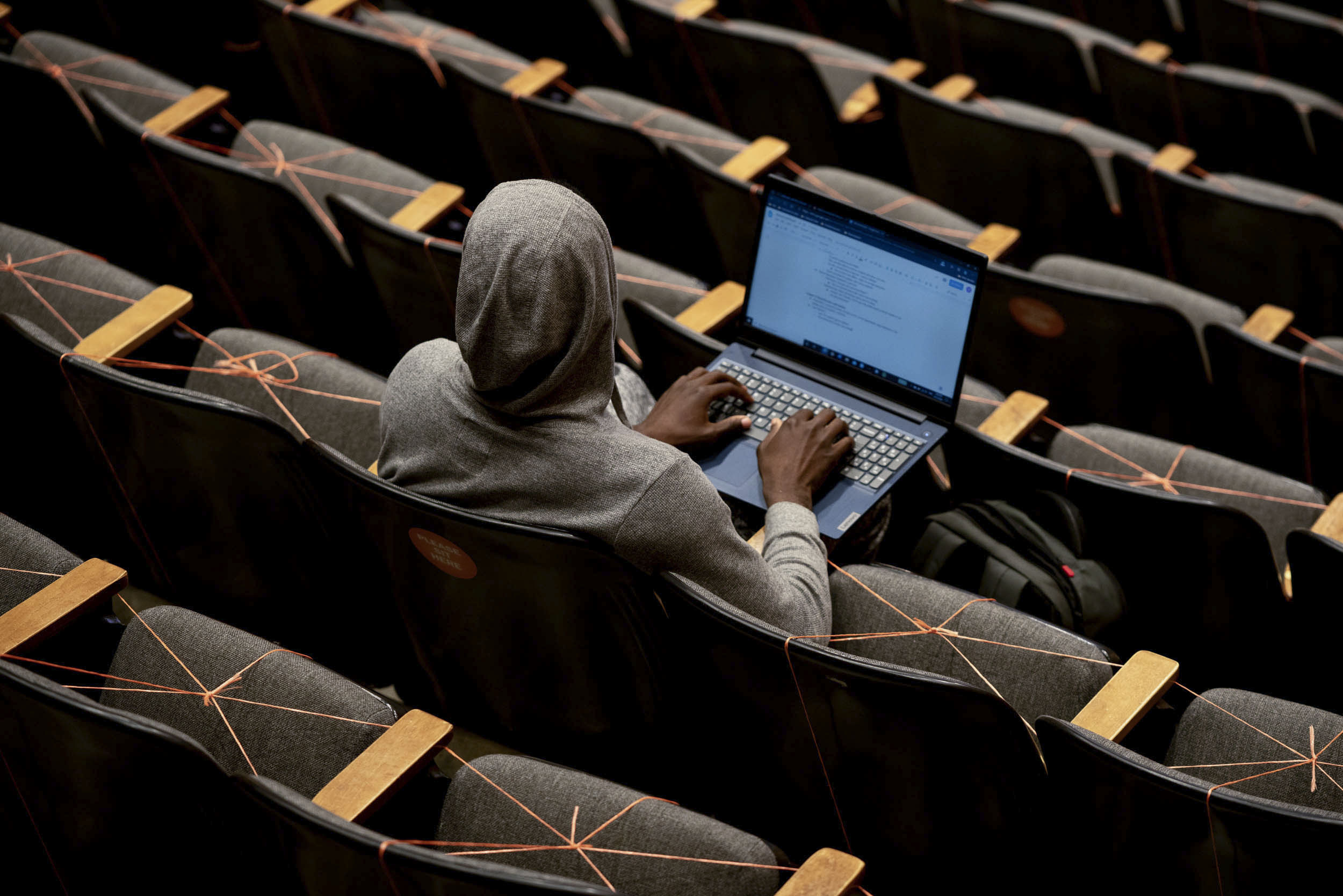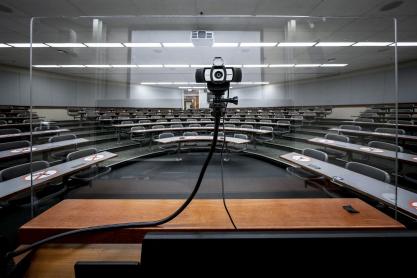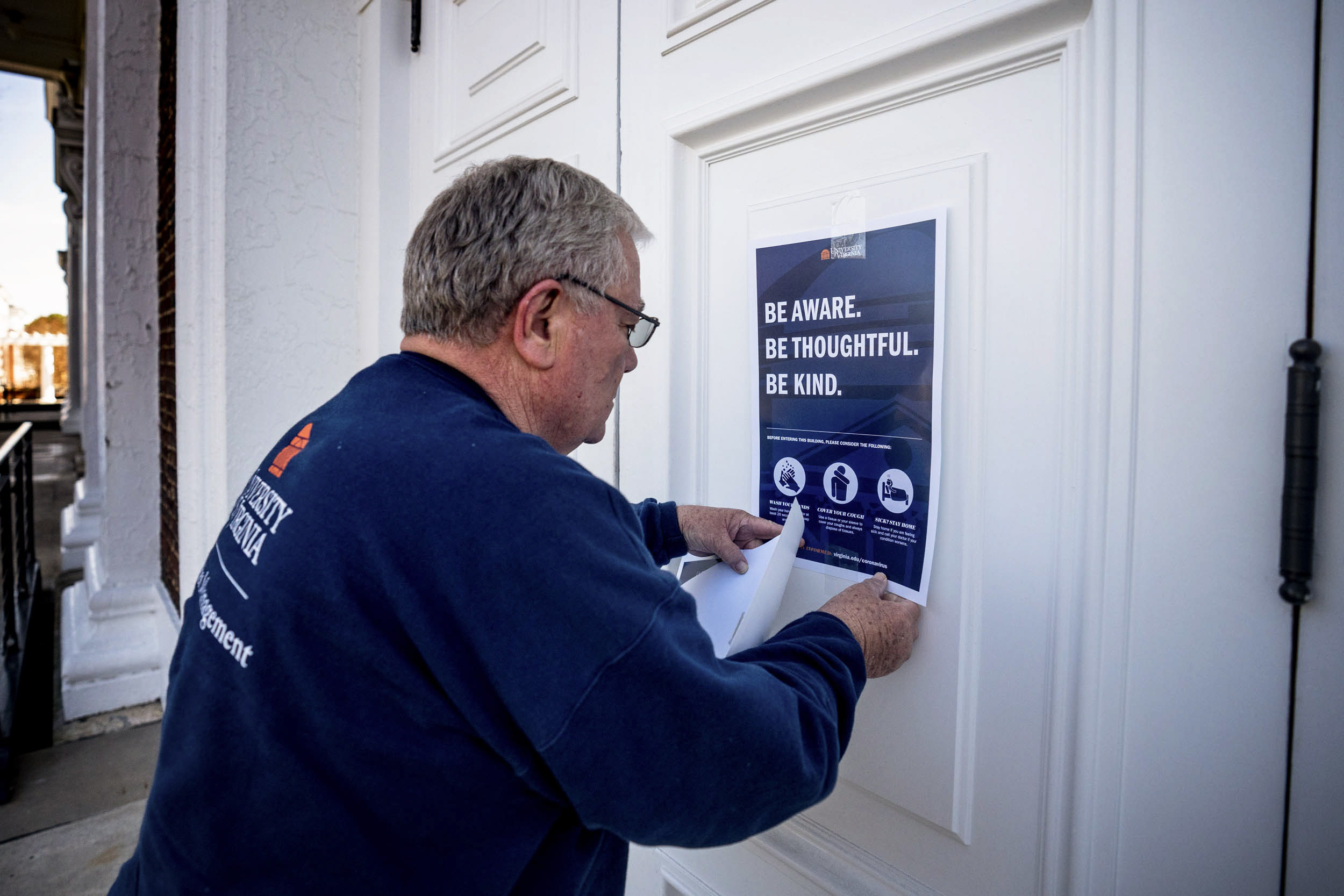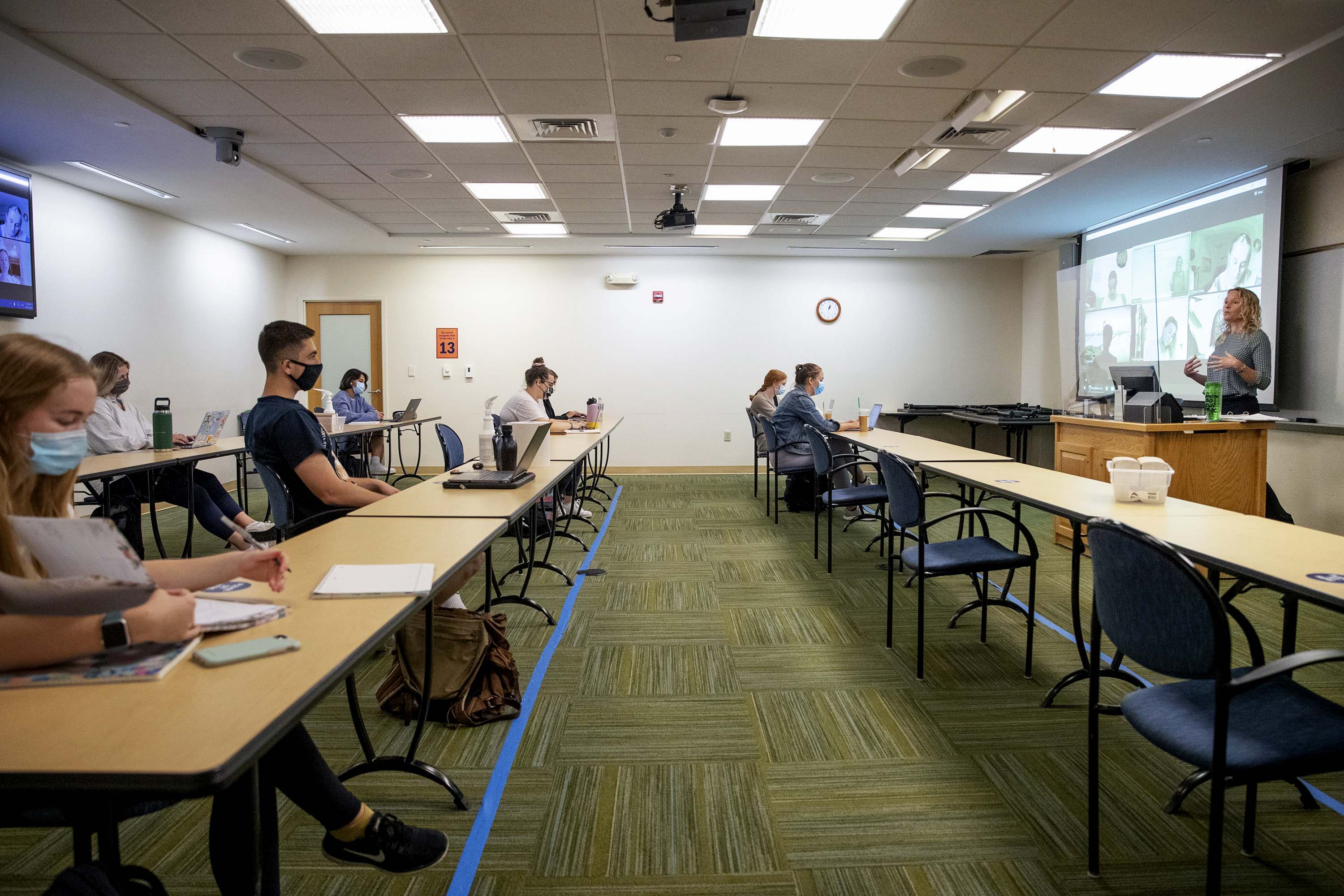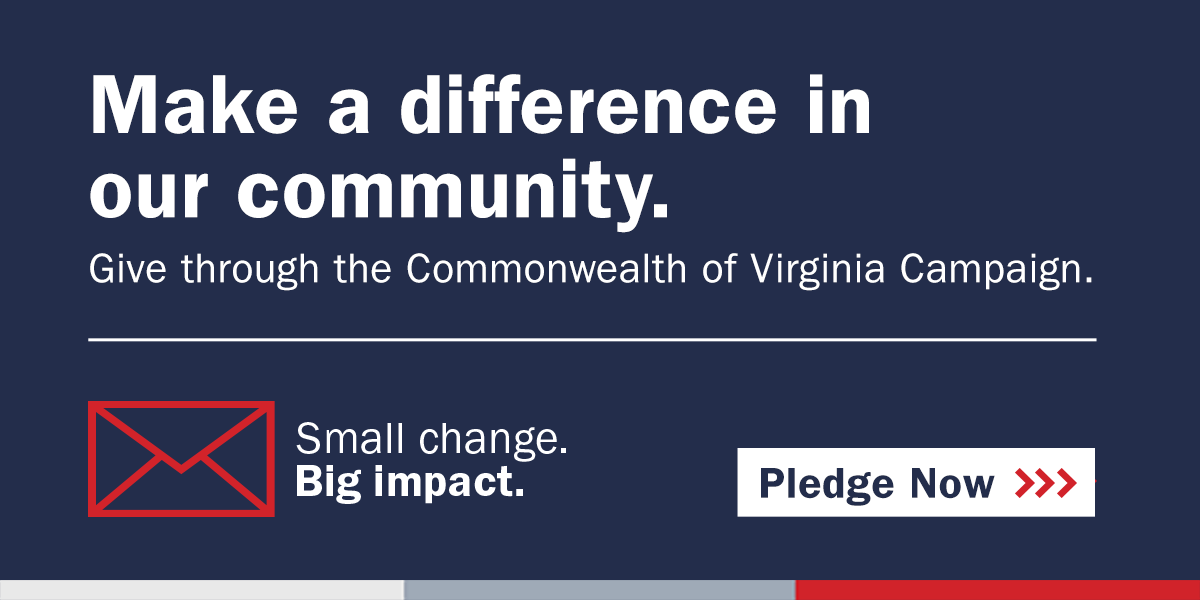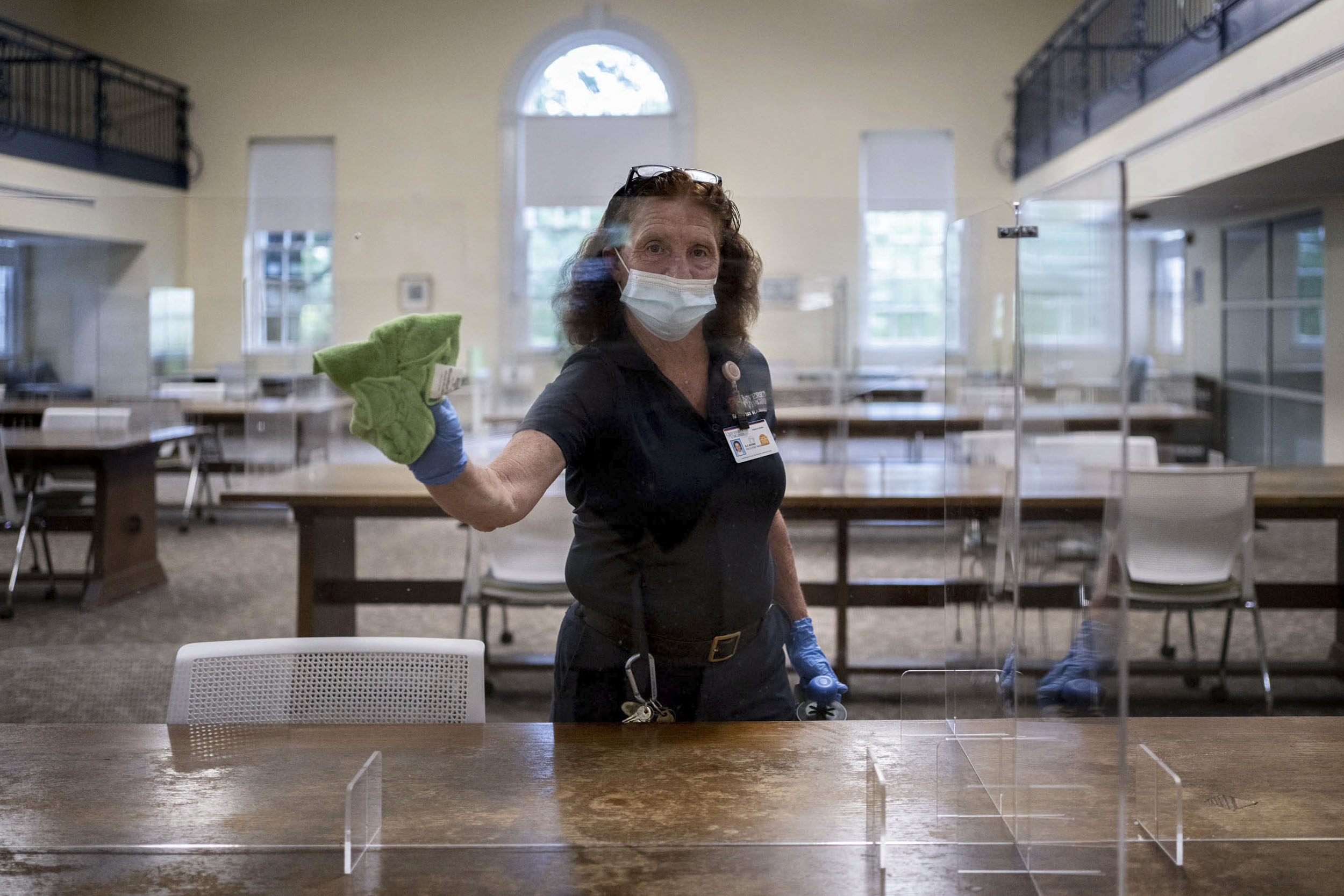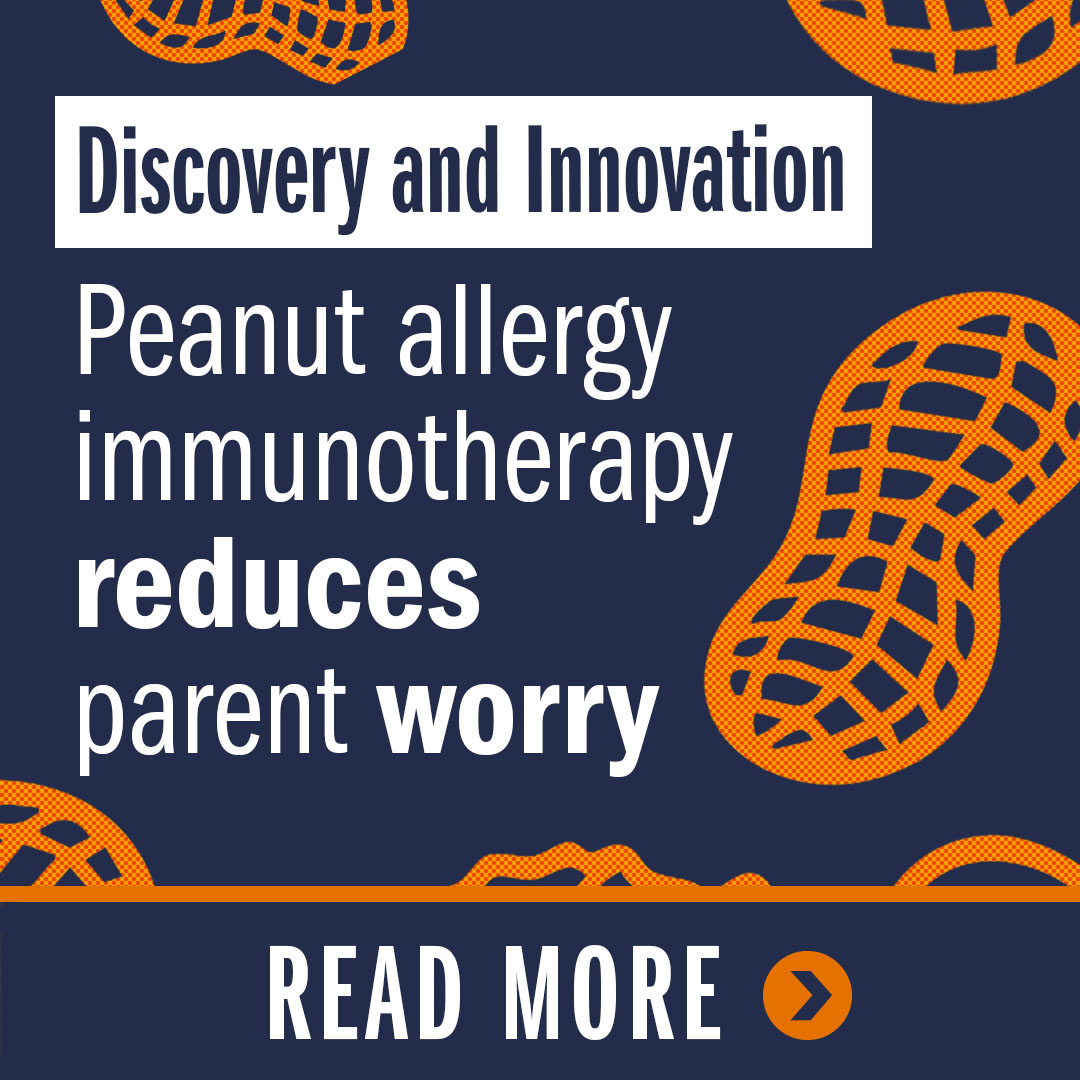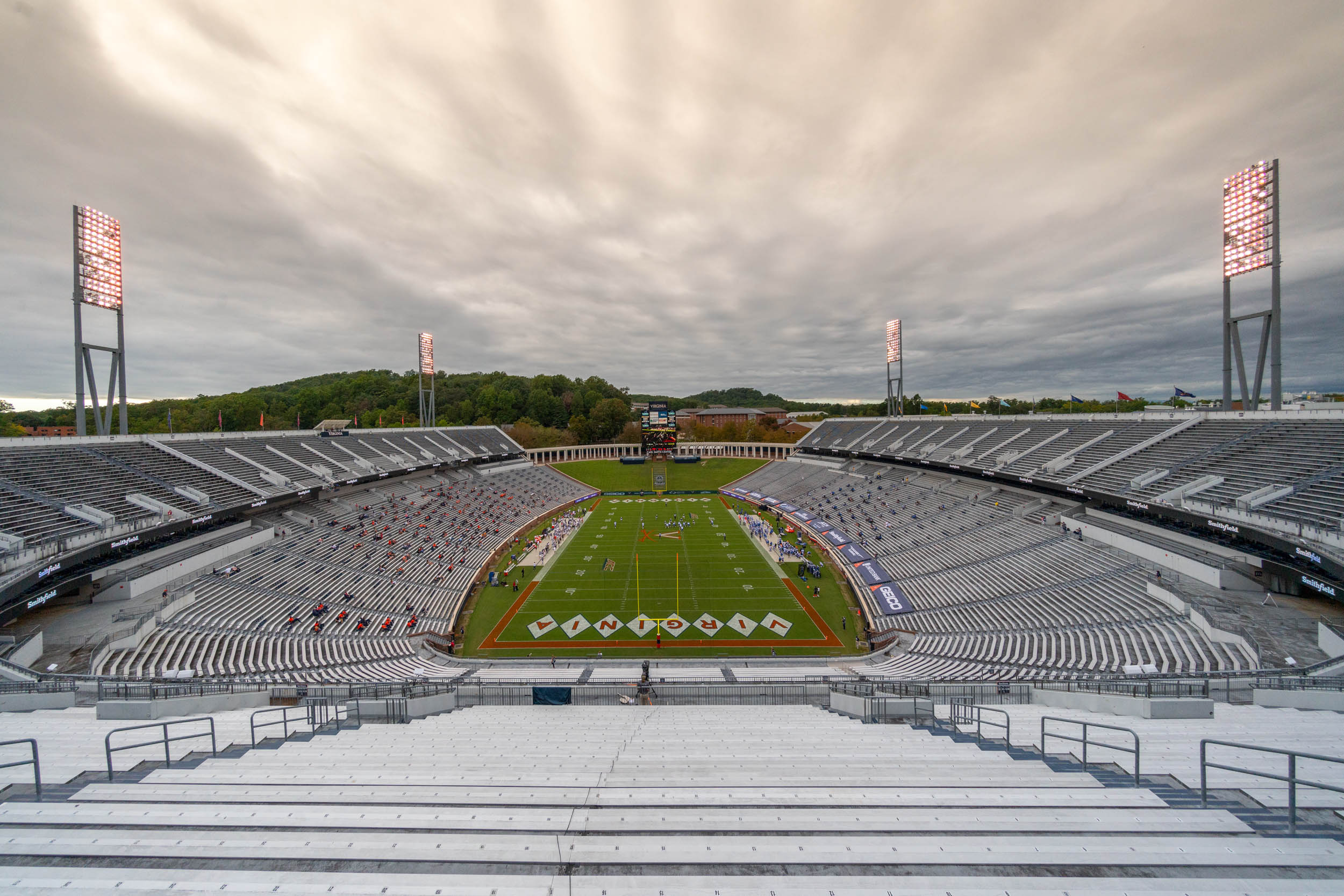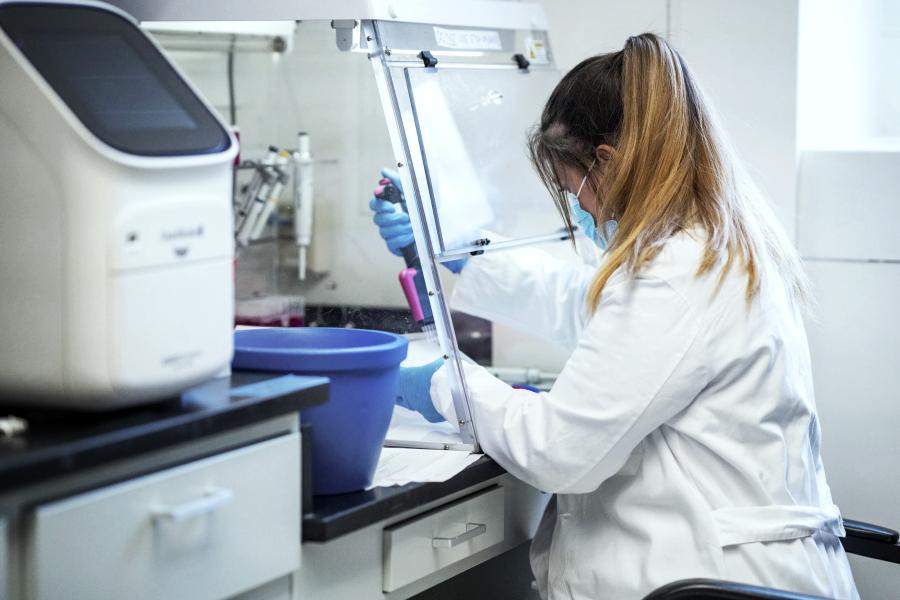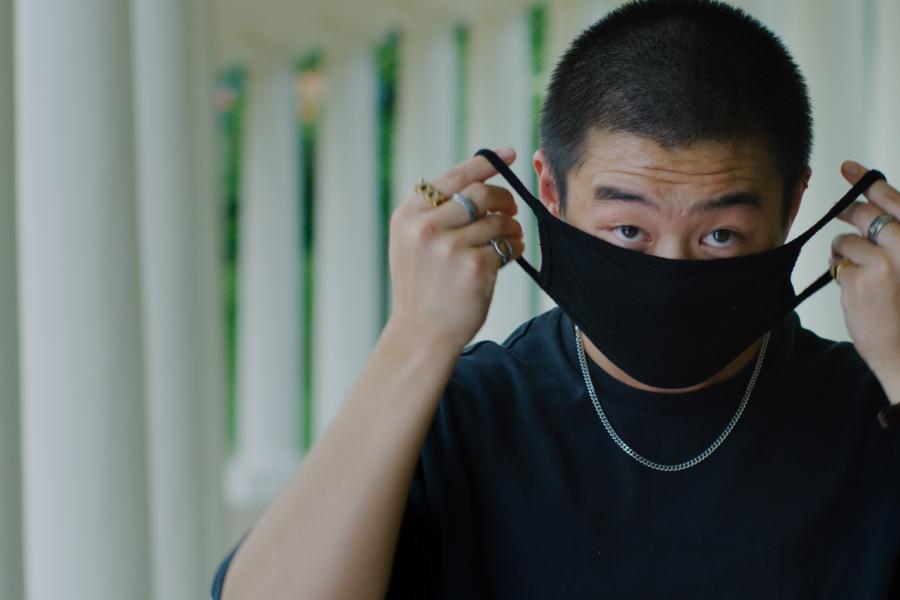At the beginning of the fall semester this year, questions were much more abundant than answers.
The University of Virginia had just come through an unprecedented spring, shifting courses online in about eight days in March as the COVID-19 pandemic hit and normal operations ground to a halt around the world. Even as the spring semester wrapped up, however, University leaders were turning their attention to planning for the fall, carefully ramping up research again and bringing some students back to Grounds.
As they did so, they had many questions in mind. Would the protective measures the University put in place help slow the spread of COVID-19? Would students accept and embrace public health recommendations, like mask-wearing and gathering only in small groups? Would COVID-19 testing plans – including everything from saliva testing to wastewater analysis – help detect asymptomatic spread on Grounds? Would some semblance of college life continue, even as the COVID-19 pandemic slowed or shut down so many things?
